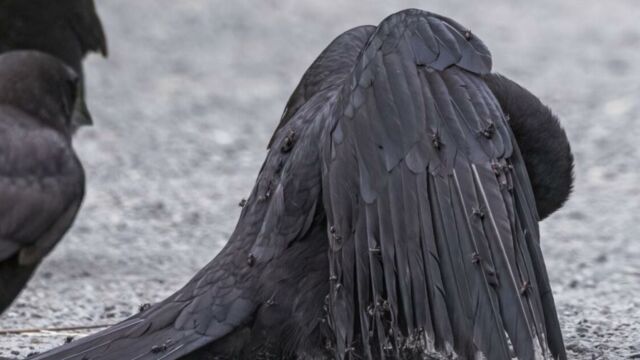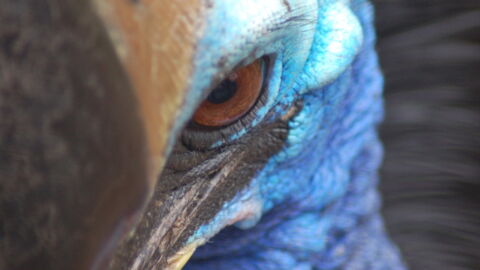It was an intriguing scene that photographer Tony Austin captured in British Columbia, Canada. While he was in a nature reserve, the Swan Lake Christmas Hill Nature Sanctuary, he suddenly spotted a murder of crows landing near him. And one of them caught his eye.
Discover our latest podcast
The strangest sight
Restless, spreading its wings on the ground, the bird appeared to be in trouble. 'I've never seen anything like it,' Tony Austin told CBC. It was as if the crow was taking 'a very strange and violent dust bath.' Intrigued, the Canadian grabbed his camera and crouched down to get a closer look.
But it wasn't until he got home that he realised what he was dealing with. When he zoomed in on the pictures, he saw small shapes on the crow's body. Shapes that turned out to be dozens of ants scurrying about on the dark plumage. And they didn't seem to bother him much.
A well-known behaviour: 'anting'
This behaviour is rarely observed but is well known. It is what scientists call 'anting.' The first observation was reported in 1831 by the famous ornithologist Jean-Jacques Audubon.
Research has shown that there are two types of anting: the 'active' and the 'passive' form. The former occurs when the bird deliberately collects insects with its beak before rubbing or depositing them all over its body and wings.

The latter occurs when it positions itself next to a group of ants and lies down with its wings spread to let them climb onto its plumage. Whichever the type, once the exposure is over, the bird often starts eating its visitors. But this is not systematic.
Cleaning or dining?
There are questions regarding this strange behaviour. The main theory is that this ant bath helps the birds to clean themselves and in particular to get rid of bacteria and other parasites that can colonise their feathers.
These insects are known to produce defensive substances such as formic acid which has fungicidal, insecticidal and acaricidal properties. By allowing themselves to be climbed on and roamed over, the bird would encourage them to release their substances and use them for its own designs.

In addition to eliminating parasites, the process could also help the bird to soothe the irritations caused by the renewal of its feathers during moulting. A sort of 100% natural balm to pamper its new feathers.















